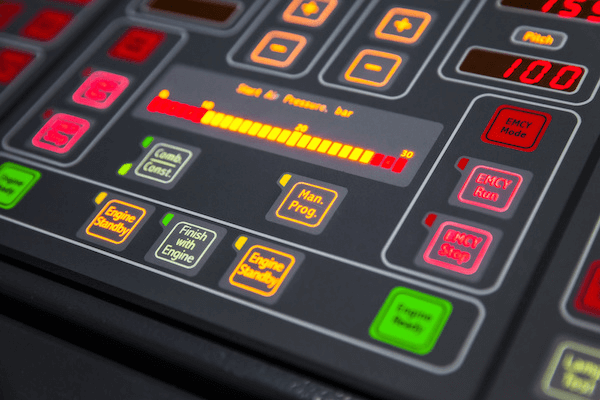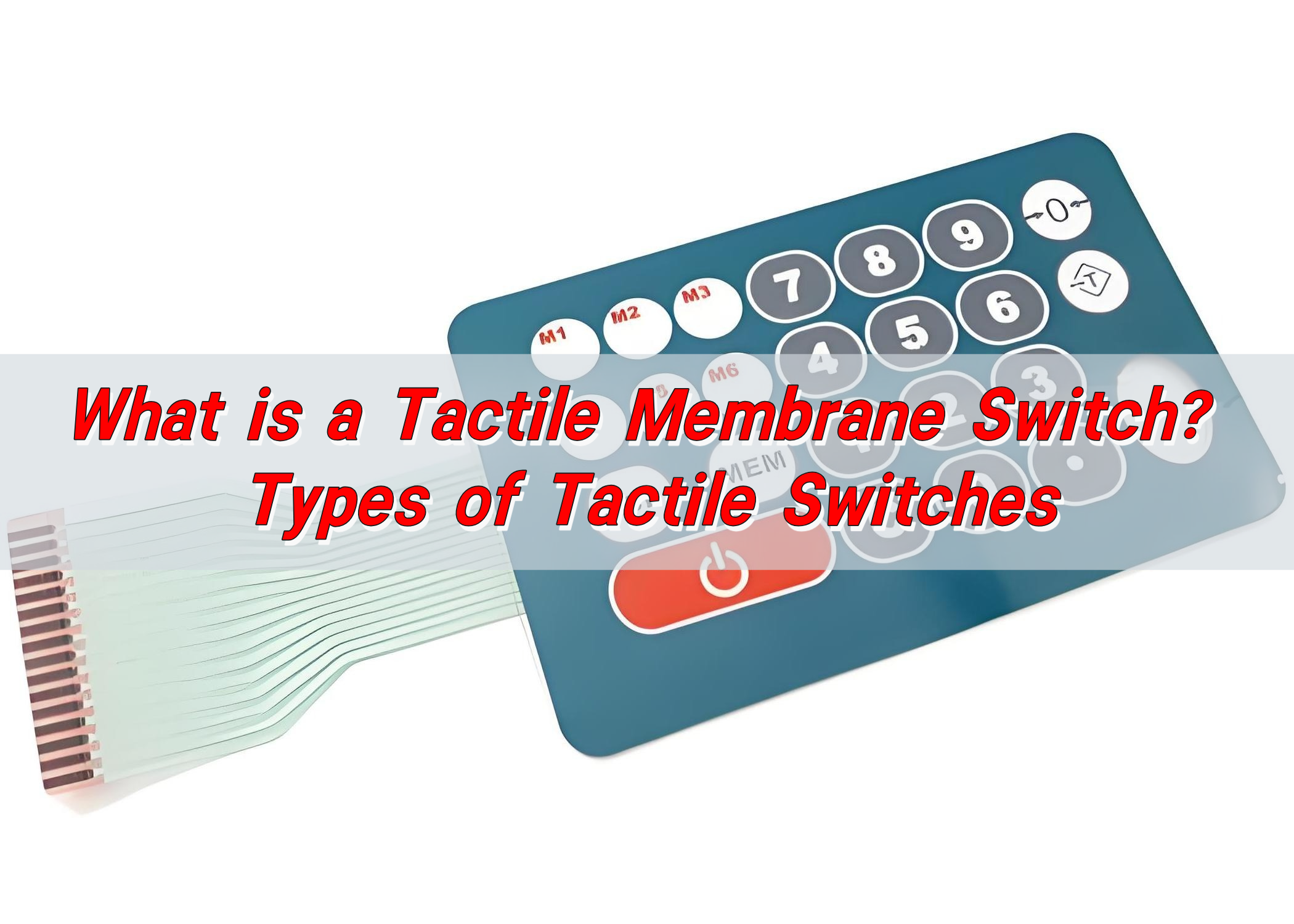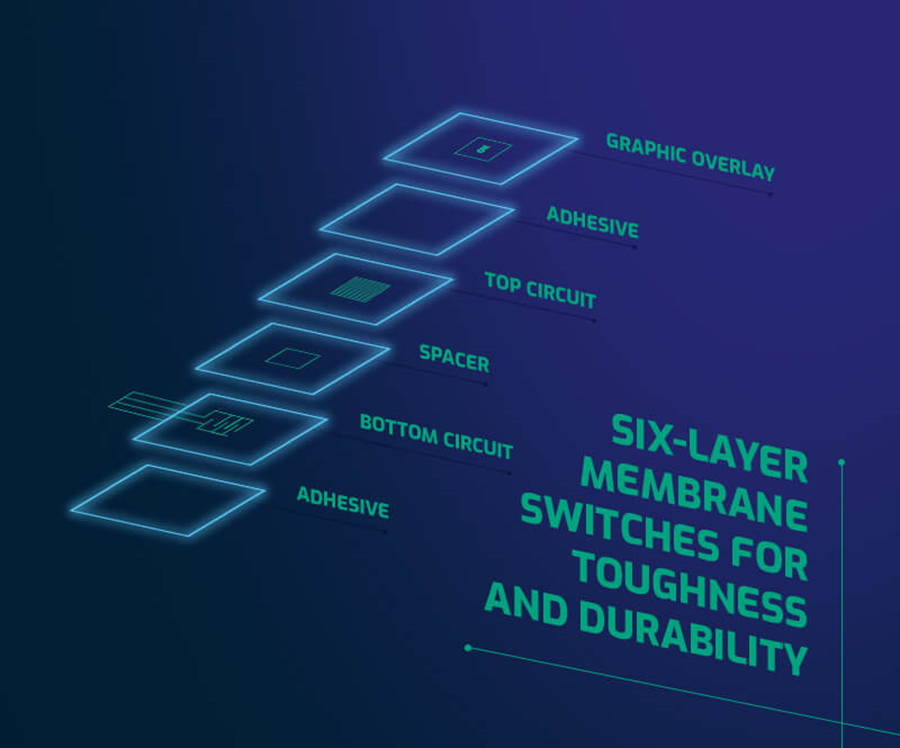The Manufacturing Process Behind Membrane Change: What You Required to Know
The production process behind membrane layer switches combines careful layout, material option, and quality assurance. It starts with comprehending the intricacies of membrane switch design and advances with numerous phases, including product selections and printing strategies. Each phase plays a vital role in guaranteeing functionality and sturdiness. The complexities of layer building and the extensive testing standards may disclose understandings that are not quickly noticeable. What exists beyond these foundational components?
Recognizing Membrane Layer Switch Design
Membrane layer switches might appear basic at initial glance, their design involves detailed considerations that ensure functionality and toughness. The style process begins with a complete understanding of customer demands, including the interface's desired application and environmental elements. Ergonomics is a crucial element, as the format should facilitate convenience of use while guaranteeing that tactile responses meets user expectations.Moreover, the layering of parts, such as graphic overlays, sticky layers, and conductive traces, should be specifically engineered. membrane switch. This layered arrangement not only influences the switch's responsiveness however additionally affects its durability. Interest is given to the sealing techniques employed to safeguard versus dampness and dust, which could compromise efficiency. In addition, design considerations encompass visual appeals, where color pattern and visual quality enhance customer experience. Inevitably, the layout of membrane changes balances capability, customer experience, and toughness, making sure that they meet the needs of different applications efficiently
Materials Utilized in Membrane Switch Over Production
When selecting products for membrane layer switch manufacturing, it is essential to consider both efficiency and durability. The primary materials consist of polyester and polycarbonate movies, which offer adaptability and strength. These movies are frequently covered with sticky to assure appropriate bonding to substratums. Conductive inks, usually made up of silver or carbon, are important for developing electric connections within the button, enabling trusted operation.Additionally, a safety layer, such as a difficult layer, is frequently put on improve scratch resistance and longevity. The selection of backing material, such as acrylic or foam, can considerably influence the button's responsive feel and general user experience. Additionally, numerous environmental variables, consisting of temperature and moisture, need to lead material option to ensure peak efficiency in particular applications. Ultimately, the ideal mix of products contributes to the membrane switch's functionality and lifespan, making notified options crucial for manufacturers.
The Printing Process: Creating Graphics and Text
The printing process in membrane button production plays a substantial role in creating high-grade graphics and text. Various graphic design techniques are utilized to guarantee aesthetic appeal and functionality, while cautious ink choice methods are important for toughness and performance. Comprehending these aspects is basic for attaining finest lead to membrane switch style.
Graphic Layout Techniques
Graphic design strategies play a vital duty in the printing process of membrane buttons, as they define just how graphics and message will ultimately show up on the end product. Efficient visuals style involves the critical use shades, font styles, and layouts to improve readability and visual charm. Developers commonly utilize vector graphics for scalability, making sure that images stay sharp at various sizes. In addition, interest to comparison and alignment is crucial, as it influences user interaction and aesthetic top quality. The consolidation of branding components, such as logos, need to be managed with care to maintain brand honesty. Overall, thoughtful graphic design methods contribute significantly to the functionality and good looks of membrane layer buttons, influencing user experience and item performance.
Ink Selection Techniques
Selecting the appropriate ink is necessary for accomplishing the desired aesthetic quality and durability in membrane switch production. Different ink types are made use of, consisting of solvent-based, water-based, and UV-curable inks. Each type supplies distinctive characteristics, such as adhesion, resistance, and versatility to ecological variables. Solvent-based inks are frequently favored for their sturdiness and vivid shades, while water-based inks are extra ecologically friendly however may have limitations in adhesion. UV-curable inks offer quick curing and durable efficiency. Furthermore, color matching techniques guarantee that the selected inks straighten with layout requirements. Inevitably, the option of ink should think about factors such as application method, substratum compatibility, and end-use demands to accomplish superior results in membrane button graphics and text.
Layer Construction and Setting Up

Material Choice Refine
A mindful option of materials is important in the manufacturing process of membrane switches, as it directly influences performance and toughness. The key products made use of include polyester, polycarbonate, and different conductive inks. Polyester is usually preferred for its superb resistance he has a good point to chemicals and abrasion, making it ideal for rough settings. Polycarbonate, on the various other hand, offers premium quality and influence resistance, which is valuable for applications calling for presence and effectiveness. Conductive inks, commonly made up of silver or carbon, are crucial for creating dependable electrical paths. In addition, the option of sticky materials impacts the total stability of the switch - membrane switch. Assessing elements such as environmental direct exposure, tactile feedback, and visual needs guides manufacturers in picking the most effective materials for their details applications
Layer Attachment Methods
Adhering layers in membrane layer switch building and construction is an essential process that guarantees capability and durability. Various bond techniques are used to protect perfect bonding in between layers, which typically consist of making use of adhesives, warmth, and pressure. Pressure-sensitive adhesives (PSAs) are typically utilized for their simplicity of application and immediate bonding abilities. Additionally, thermal bonding strategies can be applied, where warmth is used to turn on adhesive properties, safeguarding a strong bond. The selection of attachment technique greatly depends upon the products included and the certain application requirements of the membrane button. Proper positioning and consistent application of adhesives are important to protect against problems, safeguarding the switch runs efficiently throughout its desired lifespan.
High Quality Control Actions
Guaranteeing quality assurance throughout the layer building and construction and assembly of membrane buttons is vital for keeping efficiency and reliability. This process commonly involves several important actions, including complete assessments at each phase of manufacturing. Producers use innovative screening approaches, such as peel tests and bond analyses, to confirm the stability of layer bonds. In addition, aesthetic examinations are performed to identify any defects in printing or material disparities. Ecological conditions, such as temperature and moisture, are carefully browse this site kept an eye on to ensure excellent healing and attachment. Routine calibration of devices helps maintain specific production standards. By implementing these quality control actions, suppliers can substantially minimize the danger of product failing, ensuring that the final membrane changes satisfy the needed specs and customer assumptions.
Checking and High Quality Control Steps

Advancements in Membrane Layer Switch Over Innovation
As developments in technology remain to develop, membrane layer buttons are benefiting from cutting-edge advancements that boost their performance and user experience. One notable technology is the combination of capacitive touch technology, which permits more receptive and intuitive interface. This shift not only boosts looks however additionally decreases mechanical damage, prolonging the life-span of the switches.Additionally, developments in visuals overlay materials have brought about enhanced longevity and resistance to environmental variables such as moisture and UV light. These products currently provide boosted clarity and brightness, additional boosting the visual appeal.Furthermore, the consolidation of clever technology is changing membrane changes right into interactive control board, enabling connectivity with IoT tools. This connection fosters a seamless customer experience, leading the way for applications in numerous industries, from health care to customer electronic devices. Collectively, these developments setting membrane switches over as critical components in contemporary gadget style.
Frequently Asked Concerns
The length of time Does the Membrane Layer Switch Over Production Refine Take?
The period of the membrane layer button production procedure can differ considerably. Elements such as complexity, materials utilized, and production volume influence timelines, with common production ranging from a few days to a number of weeks for completion.
What Are the Common Applications for Membrane Switches?
Membrane switches are commonly utilized in various industries, consisting of auto controls, house devices, clinical gadgets, and consumer electronics (membrane switch). Their flexibility and toughness make them optimal for applications calling for user-friendly user interfaces and reputable performance in diverse settings
Can Membrane Layer Changes Be Customized for Particular Needs?

What Is the Life expectancy of a Typical Membrane Change?
The life expectancy of a regular membrane layer button varies, yet usually, it varies from 1 to 5 million cycles. Variables such as usage, setting, and worldly top quality substantially affect sturdiness and overall efficiency over time.

Are Membrane Layer Switches Eco Pleasant?
The environmental friendliness of membrane switches over differs. Some materials used might not be recyclable, while others can be eco-friendly. The total effect depends upon manufacturing products and practices, requiring mindful consideration throughout option and disposal. The production procedure behind membrane switches over combines mindful style, material option, and high quality control. It begins with recognizing the ins and outs of membrane button style and progresses via different phases, including material choices and printing strategies. When choosing products for membrane button manufacturing, it is important to ponder both performance and durability. A cautious option of materials is vital in the manufacturing process of membrane layer switches, as it straight see post affects functionality and durability. The choice of adhesion method mainly depends on the products included and the specific application requirements of the membrane button.